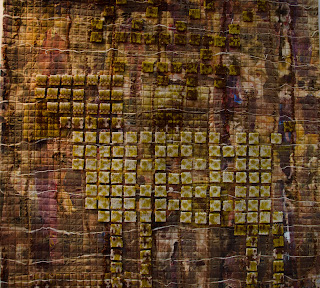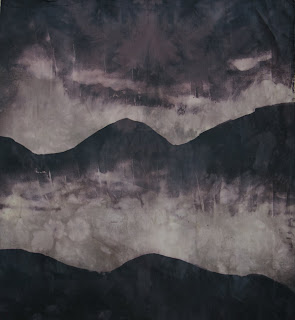

The exhibition "Welsh-Amish connection" in Birmingham this year showed beautiful woolen quilt from Wales.


But what is absolutely not typical for quilting -is knitted wool because it stretches easily. Only with the invention of stabilizers of all kinds it has become possible to make quilts from T-shirts, sweaters and other very flexible fabrics. I was a keen knitter about 15-25 years ago, and both of my children loved their sweaters, mittens and scarves. I still do knit an occasional scarf for my daughter who can't get used to the idea of buying them. I was particularly proud of my jacquard sweaters, I even invented patterns for most of them.

Now you understand why I loved Czech exhibition. The theme was "Wool" and most of the quilters didn't just use woolen fabrics, they incorporated knitted and felted fragments in their quilts. I particularly loved this quilt of Jana Haklova.

Beautiful colours, thick knitted woolen squares contrasting the surface of the quilt, cosy and contemporary at the same time.

A couple of more photos with pretty and clever use of woolen details. Jana Lalova:

Dana Velehradska:


Helena Fikejzova:

Mirka Faberova:

I immediately started making plans for a couple of knitted sweaters I don't wear anymore. My plan is to wash them first in a washing machine to felt the threads a little, then cut the sweaters into pieces and then .. I don't know yet what I'll do but I want to make something with knitted wool for my Module 3.



















